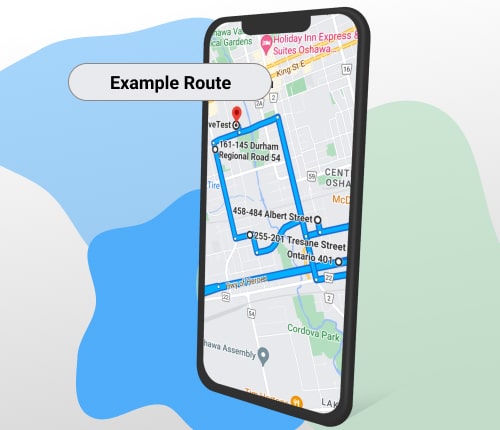DriveTestRoutes
G2 Road Test Examiner Sheet Ontario
G2 Road Test Examiner Sheet Ontario
Couldn't load pickup availability
Prepare confidently for your G2 road test with "The G2 Road Test Examination Sheet Explained." by knowing exactly how you will be marked.
This comprehensive guide breaks down the G2 examiner sheet into key categories, detailing how examiners score each maneuver.
From starting the vehicle and backing up to handling intersections, making turns, and parking this guide explains what each marking symbol means and what actions could result in minor or major errors.
With this resource, understand the scoring structure, interpret your test results and identify areas for improvement.
This official G2 DriveTest Marking Scheme, outlining all the criteria you will be assessed on during your driving exam is ideal for anyone aiming to pass their G2 road test the first time.
Guide Includes:
- One Sample Examiner's Marking Sheet
- 12 Pages of information breaking down the exam marking categories:
- Start
- Backing
- Driving Along
- Intersections / R.R crossing
- Turns
- Parking
- Stop, park and start on grade
DriveTest examiners utilize a specific examination sheet to assess candidates during their road tests. In this guide, we'll break down the categories included in the G2 examination sheet and explain the grading system. This will help you prepare for your test and understand your results!
How Examiners Use the G2 Road Test Examination Sheet
Firstly, it's important to understand the symbols and markings used by examiners on the G2 Road Test Examination Sheet:
- [OK] Maneuver performed satisfactorily
- [✔] Minor error, improvement needed (-2 points)
- [X] Major error, lack of necessary skills or judgment (-4 points)
- [R] Unsafe action at a Railroad Crossing
- [//] Maneuver not assessed
To pass the G2 road test, it's generally believed that a candidate must score at least 70 out of 100 points. This means that the combination of minor and major errors should not exceed 30 points. It's also crucial to avoid any unsafe actions, which can lead to an automatic failure.
Key Categories on the G2 Examination Sheet
-
Start: The test begins as the examiner approaches your vehicle and asks you to verify safety features like brake lights and indicators. You need to demonstrate control over all essential safety devices and properly maneuver your vehicle out of the parking space. Remember to select the correct gear, use your indicator and check mirrors and blindspots before proceeding.
-
Reversing and Backing: Examiners typically test your ability to reverse, often through a 3-point turn. This maneuver, commonly performed in residential areas, requires you to carefully check mirrors and blindspots before each movement. The examiner will evaluate your sequence of actions and how you monitor the rear of your vehicle.
-
Driving with Traffic: This category encompasses most of the test. As soon as you leave the parking space, you'll be assessed on your ability to drive safely with other vehicles on the road. This includes passing, lane changes, maintaining appropriate speeds, and observing right of way rules. Checking your mirrors every 5-7 seconds and blindspots before lane changes are critical.
-
Handling Intersections and Railroad Crossings: You'll encounter various intersections, both controlled (with traffic signals or signs) and uncontrolled. Examiners look for your compliance with traffic rules, including stopping appropriately at crosswalks or stop signs and yielding the right of way. They also assess how you approach intersections, including the smoothness of braking.
-
Executing Turns: During the test, you’ll make several turns that will be closely evaluated. Examiners pay attention to signaling, vehicle positioning, steering, speed, and right of way observance. A common mistake is failing to check blindspots, which is considered a major error. The correct handling of speed—whether a rolling stop or full stop is needed—depends on the specific turn.
-
Parking Maneuvers: One of the most challenging parts for many is parallel parking. Examiners are generally lenient, but they do assess your signaling, awareness of surroundings, vehicle positioning, and ensuring you don’t hit anything. Minor contact with the curb typically results in a minor error, provided the rest of the maneuver is executed correctly.
-
Stop, Park and Start on a Grade: This involves positioning your vehicle on an incline or decline and correctly setting your parking brake and wheel direction. This skill is crucial and is tested by the instructor during the exam.
Don't be discouraged by a few mistakes during your road test; keep your focus and continue driving carefully.
By implementing these tips, you can improve your chances of passing the G2 road test and obtaining your driver's license. For a more comprehensive breakdown and insider tips, consider purchasing our detailed guide, which covers everything you need to know about the G2 road test. Good luck!


Drive Test Route
Pass Your Driving Test With Confidence!
Up-to-date Driving Test Route maps.
Navigate route on your mobile phone using GPS and practice the route to familiarize yourself with the actual roads of the driving test.

